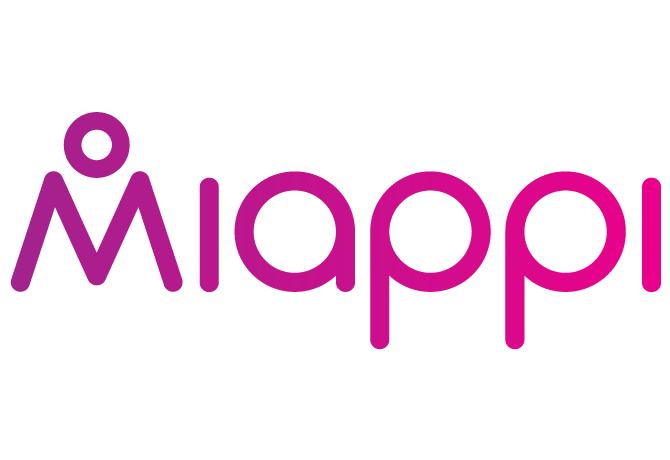The Future is Now: Incorporating AI into digital marketing

Since the 1950 invention of the Turing Test , scientists, roboticists and programmers have strived to build a machine capable of exhibiting intelligent behaviour indistinguishable from that of a human. It was not until 2014, however, that the test was finally beaten by a machine called Eugene Goostman . This super advanced chatbot was able to convince 33% of users that is was in fact a 13 year old boy, marking a significant advance in the development of true artificial intelligence.
AI is under way
AI may still sound like a technology of the future but, since the invention of Eugene, it could be happening right beneath your fingers as you read this article. When you envision AI, it’s likely in the form of a futuristic robot butler who makes your toast and eventually violently rebels against you, but AI is happening right now, and it’s proving powerful in the realms of digital marketing.
Technology is never quite as exciting when it finally arrives as it is when we daydream about it decades before. Google’s driverless cars are pretty cool, but do they make us feel like we’re living in a crazy futuristic world? Not exactly.
And that’s one reason why AI has emerged very quietly onto the scene, in a number of guises including machine learning in a digital marketing setting and AI assistants like Amazon Echo’s much-hyped Alexa. Today 84% of 14- to 17-year-olds claim they currently use digital voice-enabled assistants like Amazon Echo and Google Home.
The evolution of chatbots
While uptake of at-home AI assistants demonstrates that younger demographics are very accepting of and interested in this type of technology, it’s the marketing applications of AI which we’re particularly interested in today.
Moving into digital marketing, we enter a world of machine-learning and chatbots which can interact with consumers on a personal level, without the costly need for human staff. Part of the beauty of chatbots is the fact that they can be integrated into a huge array of platforms, from messaging apps such as Facebook Messenger and Skype, to professional tools like Slack.
Within these systems, users can conveniently fire up a chatbot and engage with it to access services such as lifts from Uber, news from The Guardian or holiday bookings from Hipmunk. These chatbots are in existence right now, but they are still relatively basic. Over the course of 2017, however, we can expect to see significant improvements and evolution.
Taco Bell has been one of the earliest adopters of chatbot technology and the US-based fast food chain is now using a Slack-integrated chatbot to interact with users. The “Tacobot” can communicate in a snappy style with users, answering questions, making recommendations and, most importantly, taking orders just like a human waiter. Tacobot allows you to change your mind about your order, make replacements, add extras and invite friends to order for themselves too, exactly like in a restaurant.
Machine learning & language
One of the biggest ways in which chatbots (and other forms of AI) are set to evolve involves how they interpret human language. Until very recently, to arrange or request anything specific from a digital service, users would need to tick boxes and select options from drop down menus. Today, bots are getting better and better at interpreting and responding to human language thanks to machine learning.
Soon it will be possible to request information about getaways to the Mediterranean, outside of the school holidays, close to Michelin starred restaurants and receive accurate results in return. Since the bot already knows your location and nearest appropriate airport, it could even serve up flights ready for you to book right there on screen.
The benefits of an advanced service like this for digitally savvy brands are almost endless. With no need for human respondents, businesses can save a packet on servicing user enquiries, while also providing a much more immediate link between consumer enquiries and conversions thanks to the smart technology wrapped up in these artificially intelligent bots.
Content creation
It’s estimated that by 2018, 20% of content created by businesses will have been authored by “robot writers” like Wordsmith. It’s now possible for AI-based tools and programmes to turn raw facts and data into well-written content in a range of formats, from blogs and whitepapers, to product descriptions. More advanced forms of this technology can now alter the tone and style of each piece, depending on target audiences and the desired level of formality. Even some digital news publications are using AI authors to create their clickbait.
Smarter decisions
But AI in this sphere isn’t all about personal assistants and chatbots. There are forms of artificial intelligence which are helping digital brands make increasingly intelligent decisions about their marketing and strategies. Built on data, deciding on digital marketing best practice can be daunting for regular humanoids confronted by a wealth of statistics.
Machines, on the other hand, are impressive number-whizzes and can crunch the stats to give insightful information about possible “next steps”. Tools like Quill, which creates an insightful Google Analytics report in mere seconds (try fitting that into your lunch break), are swiftly becoming instrumental in digital campaigns, highlighting problems and pointing to areas for potential improvement like the most efficient Poindexter in the world!
Who’s using AI now?
Aside from Taco Bell’s Tacobot, as discussed above, and some digital publications (who shall remain nameless!) which other brands are making use of AI right now?
- Google currently uses RankBrain to interpret a huge number of natural speech-based search enquiries
- Under Armour (and many other brands) use IBM’s Watson to serve up personalised recommendations based on in house data and third party data using predictive analytics
- Brands from Hugo Boss and FCUK to Clarks use AgilOne to predict user behaviour and take action accordingly to increase sales automatically
- And that’s just the tip of the iceberg!
AI at Miappi
Here at Miappi our social media aggregation tool is packed with intelligent tools to help our clients get the most out of the platform. For example, Miappi is already using machine learning to identify, at scale, our clients’ most valuable assets. Our ImageScan feature sifts through incoming social media looking for the right (and the wrong!) type of image; filtering by objects, locations, faces, sentiment, company logos and more.
In the coming weeks we will also be testing our new natural language analysis, filtering and ranking text by sentiment, intent, flamboyance and other characteristics.
All of these new features are focussed on delivering on our promise of making it easy for digital marketers to find good content that will engage their customers and drive sales. Our machine learning does the heavy lifting when it comes to moderation…panning for gold and leaving behind valuable content ‘nuggets’.
We can’t wait to see how AI evolves across the industry – and the world – and we’re excited to continue incorporating smart features into our own social media technology.Make the valuable visible. REQUEST A DEMO today to showcase amazing content which presents your brand at its best.



